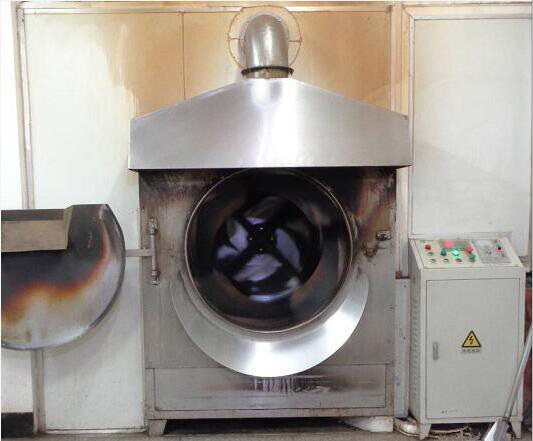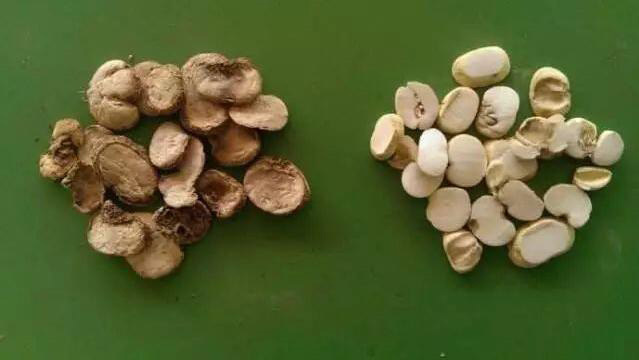The 8 major process methods of Chinese medicine processing are explained in detail.
Heating is an important means of traditional Chinese medicine processing, in which stir-frying and calcining are widely used. Many traditional Chinese medicine after stir-frying, can kill the enzyme and glycoside, such as mustard, burdock, etc.; calcined commonly used to deal with mineral drugs, animal shells and fossil drugs, can make the quality brittle and fragile, and the role will also change. Such as alum calcined after drying wet, convergence effect enhanced. Blood can stop bleeding after charcoal. After heating and cooking, the toxicity of Aconiti radix Aconiti was significantly reduced, which ensured the safety and effectiveness of clinical medication.
After the traditional Chinese medicine is made of auxiliary materials, some changes will take place in the aspects of nature, taste, efficacy, function tendency and side effects, so as to maximize the curative effect.
1. washing and selection
1. Washing: mainly to wash away the sediment and dirt of medicinal materials, mostly used for root and rhizome medicinal materials. Direct sun-dried or shade-dried medicinal materials and medicinal materials with aromatic odor are generally not washed with water.
2. Selection: mainly to remove impurities and non-medicinal parts, while preliminary grading, which is conducive to processing and drying respectively.
2. trimming and cutting
Use pruning, cutting, shaping and other methods to remove non-medicinal parts and substandard parts. Try to make the medicinal materials neat and conducive to packaging, such as cutting off reed heads and fibrous roots, slicing, cutting petals, truncating, etc.
At present, most medicinal materials are processed and cut while fresh in the producing area, which is easy to cut, has good sheet shape, fast drying, reduces some processes and low cost.
3. peeling and shelling
Remove the skin or shell of fruit seeds or roots and rhizome medicinal materials and skin medicinal materials, so that the surface of the medicinal materials is smooth, which is conducive to drying and storage. For fruit seeds, the general harvest after drying the shell, remove the seeds; or first remove the shell to remove the seeds, and then dry.
4. steaming, boiling, scalding
Some medicinal materials are dried after steaming, boiling, or blanching. Medicinal materials containing mucus juice, starch, or sugar are not easy to dry. After steaming, boiling or scalding, they dry quickly and are not easy to produce insects. The length of heating time and what kind of heating method to take, depending on the nature of medicinal materials, medicinal materials after heating treatment, not only easy to dry, but also conducive to scraping core.

5. fumed sulfur
It is smoked with sulfur before and after the medicine is dried. Some medicinal materials, in order to make the surface color white, to prevent mildew, commonly used sulfur fumigation. At present, this method is commonly used at the grass-roots level, its effect is good, the cost is low, and the use has a long history. However, sulfur dioxide residues are high and exports are often restricted, which should be paid attention. The new version of the Pharmacopoeia has been part of the medicinal materials for sulfur dioxide residue limits.

6. sweating
The medicinal materials are dried or baked to semi-dry or slightly boiled (steamed), piled up to generate heat, and the method of distributing water inside is commonly called "sweating". It can be repeated many times according to the situation, which is conducive to drying, and can make the medicinal materials soft, discolored, increase fragrance or reduce stimulation.
7. drying
Remove a large amount of water in the medicinal materials, avoid mildew, moth-eaten and effective ingredients decomposition and bad, conducive to storage, to ensure the quality of medicinal materials. Except for a few fresh herbs, they all need to be dried. The following methods are commonly used:
1. Dry
Direct drying by sunlight is a simple and economical method. Most medicinal materials are dried by this method. It should be noted that this method should not be used for medicinal materials containing volatile oil to avoid the loss of volatile oil. The color and active ingredients of medicinal materials are easily discolored after sunlight, and this method is not suitable. Some herbs in the hot sun after drying easily burst. ④ After the medicinal materials are dried in the sun, the medicine can be packaged only after it is cool. Otherwise, it will ferment due to high internal temperature, or cause excessive local moisture and mildew due to partial moisture not being dispersed.
2. Drying
The medicinal materials are dried by means of heating. The general temperature is 50~60 ℃, which has no destructive effect on the composition of the general medicinal materials and inhibits the activity of the enzyme. The juicy fruit medicinal material containing vitamin C can be dried at a temperature of 70~90 ℃. This method is not suitable for medicinal materials containing volatile oil or the need to retain enzyme activity. If the starch-rich medicinal materials need to maintain the powder, the drying temperature should be slowly increased to avoid the gelatinization of the fresh medicinal materials in case of high heat starch.
3. Dry in the shade
The herbs are placed or hung in a ventilated room or under a shade to avoid direct sunlight and dry by natural evaporation of moisture in the air. Mainly applicable to flowers, leaves and herbs containing volatile components. Some medicinal materials are easy to be separated from the skin or empty during the drying process, so they must be kneaded. Some herbs are polished by Chinese medicine during the drying process.
4. Baking
It is similar to the drying method, except that the temperature is slightly higher, and it is heated on tiles and pottery. It is mostly used for drying or grinding powder of certain animal medicinal materials.
8. selection and scoring
The method of dividing the processed medicinal materials into specifications and grades is the last process of origin processing. The specification grade of medicinal materials is the quality standard of medicinal materials, which should be practical and reasonable.
Recommend News








